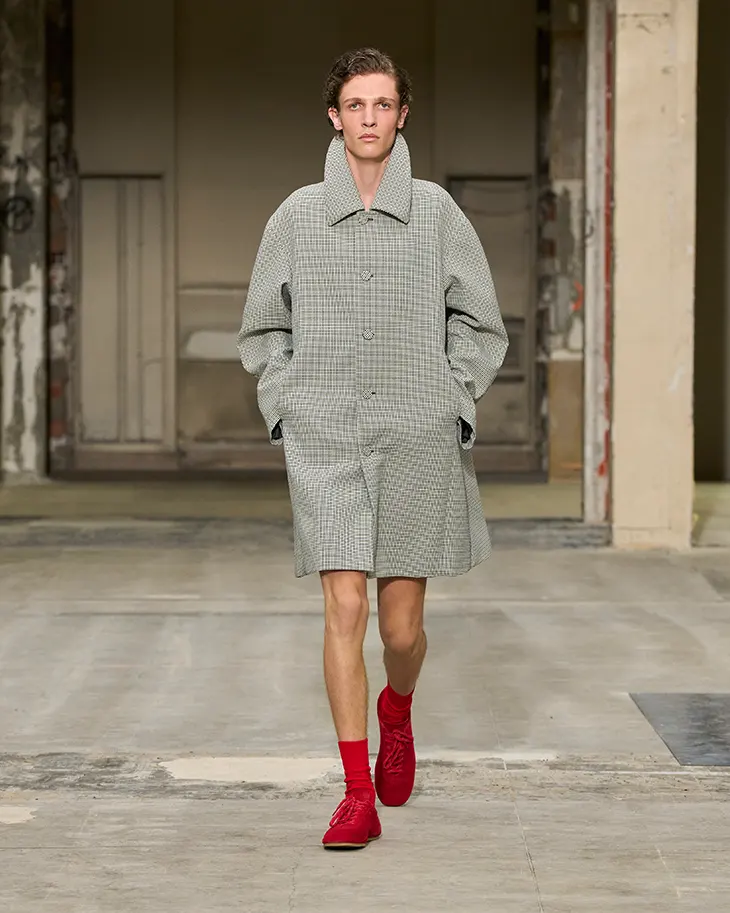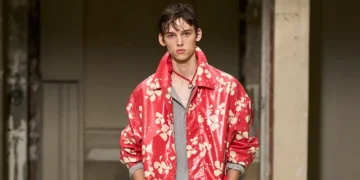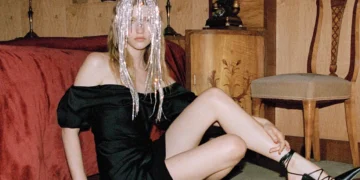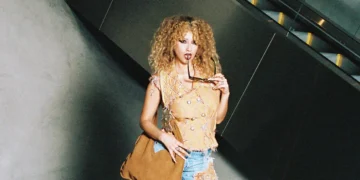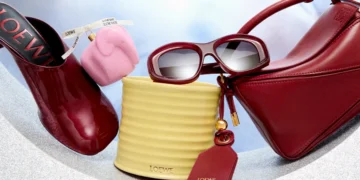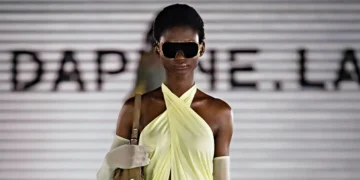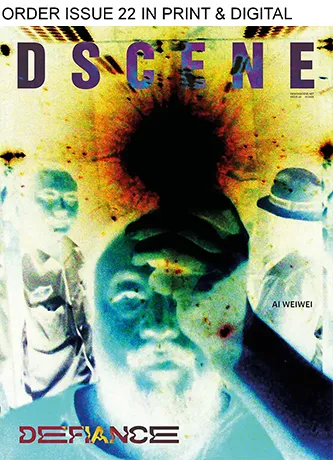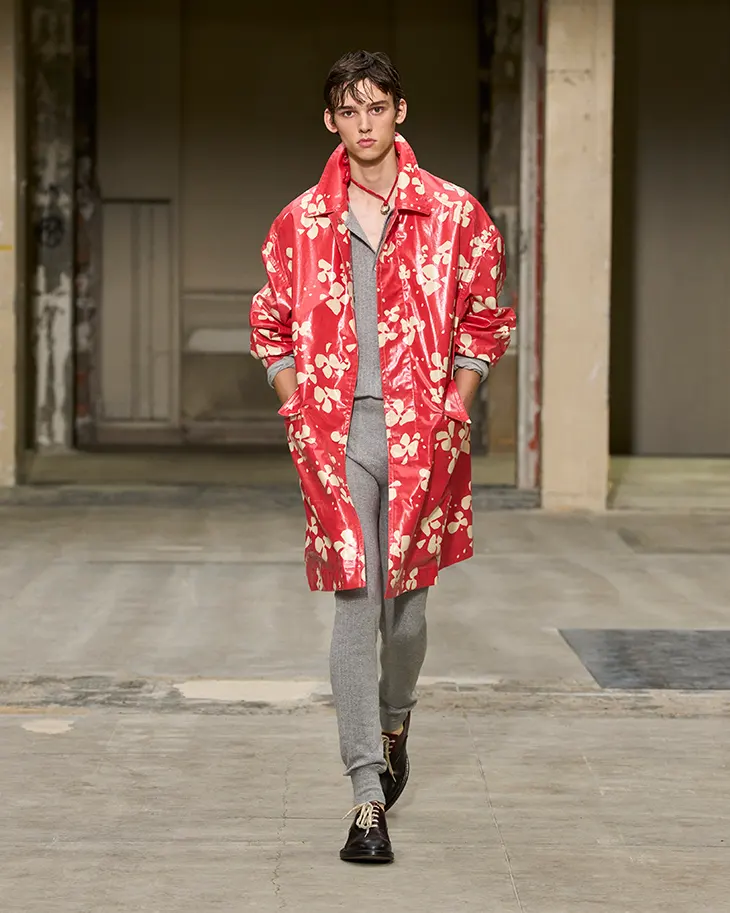
Julian Klausner introduces his first SS26 menswear collection for Dries Van Noten with a sense of calm and disorder. Just a Perfect Day begins where the night ends: sand still on the ankles, buttons halfway fastened, a shirt dragging slightly behind. He builds the collection not around structure or symmetry, but around mood the way a look carries memory, energy, and leftover tension.
Klausner works through contrast. He plays between formal shapes and disassembled ease, not erasing tradition but letting it slide. Tailoring carries presence, but the silhouette often relaxes, jackets loosen across the waist, trousers stop mid-calf, knits hug the body without restriction. Everything feels recomposed. A tuxedo may pair with drawstring shorts. A cummerbund might hold a casual tank in place.
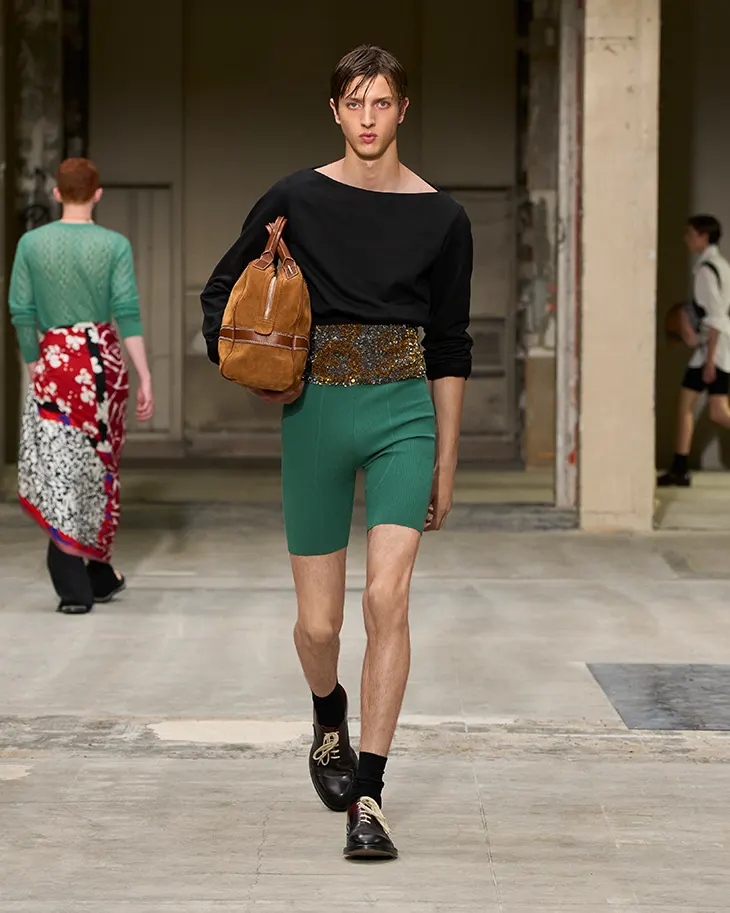
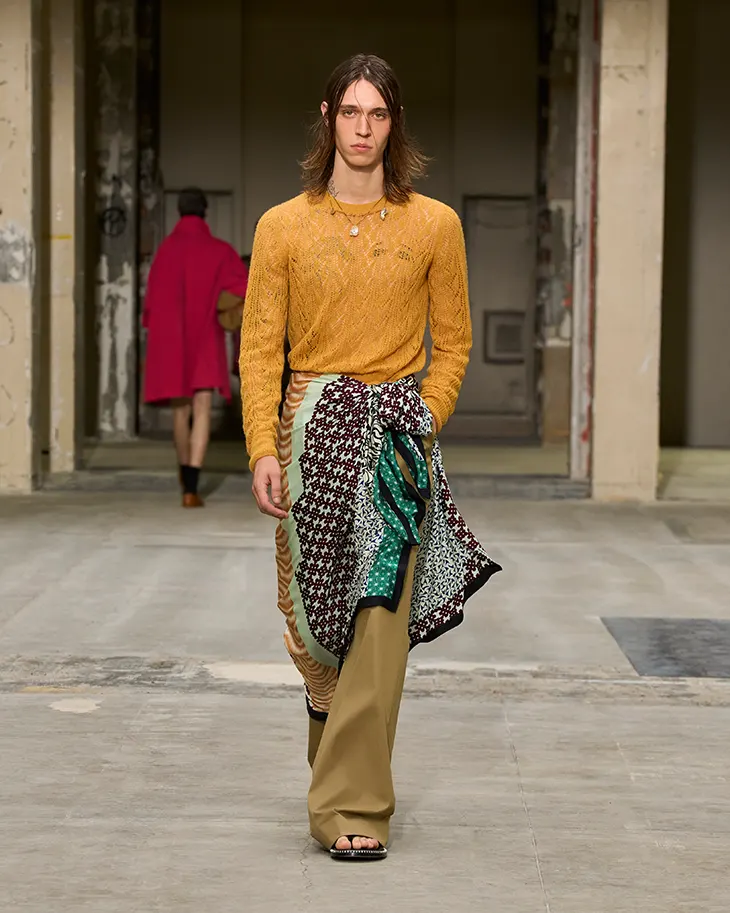
Classic suiting evolves through new volume. Coats in double duchesse satin arrive bell-shaped or box-pleated, worn over ribbed knit cycle shorts. Wrapped vests layer over crisp white shirting. Some tops dip into boat necklines or define the waist with stretch jersey. Throughout, the tailoring mixes sharp seams with soft silhouettes, opening space for a different kind of elegance.
Klausner favors fabrics that shift tone depending on how they move. Glossy satin and cloqué jacquards sit beside airy knits. Vertical strips of reused jacquard from earlier collections recall pajama sets, made graphic through repetition. Jockey stripes in silk run through the lineup with ease. Knitwear stitches range from ribbed to lace, each one offering a different texture without overcomplicating the form.
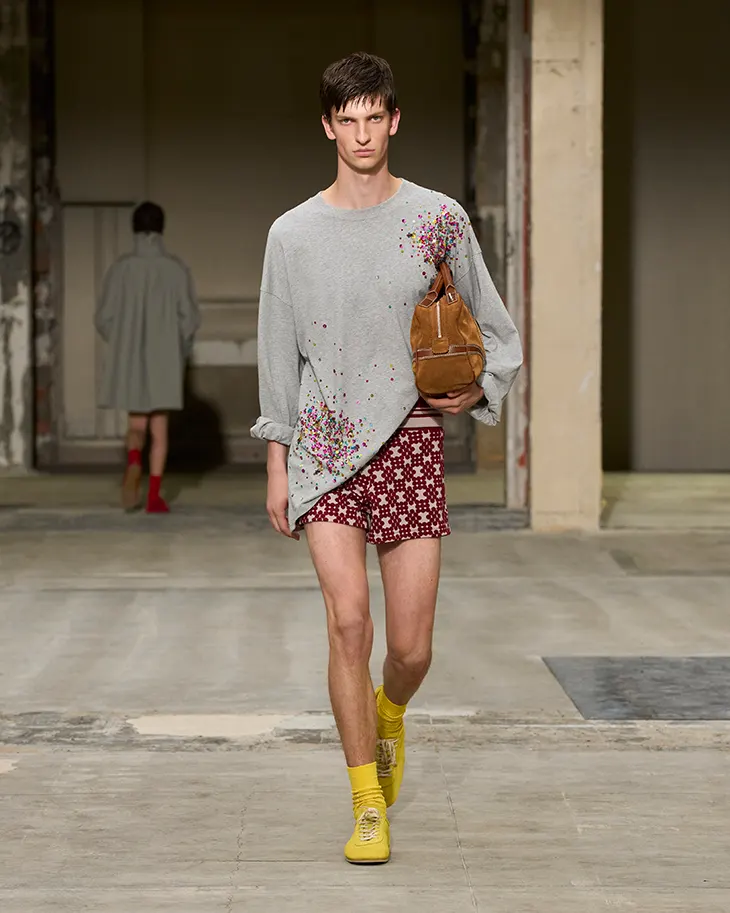
Prints land on sarongs, tops, and shorts with a light hand. Florals feel distant, diffused, or exaggerated in scale. Dots distort. Smaller two-tone motifs repeat across silhouettes.
The color palette moves in pairs and oppositions red and cyan, orange and mauve, green with black, khaki and white, anchored by grey mélange. Saturated pieces reset the eye between more neutral tones. Sequins scatter across jersey like confetti. Elaborate embroidery lands on pieces that don’t call for it, like tanks or drawstring shorts, making detail feel offhand.
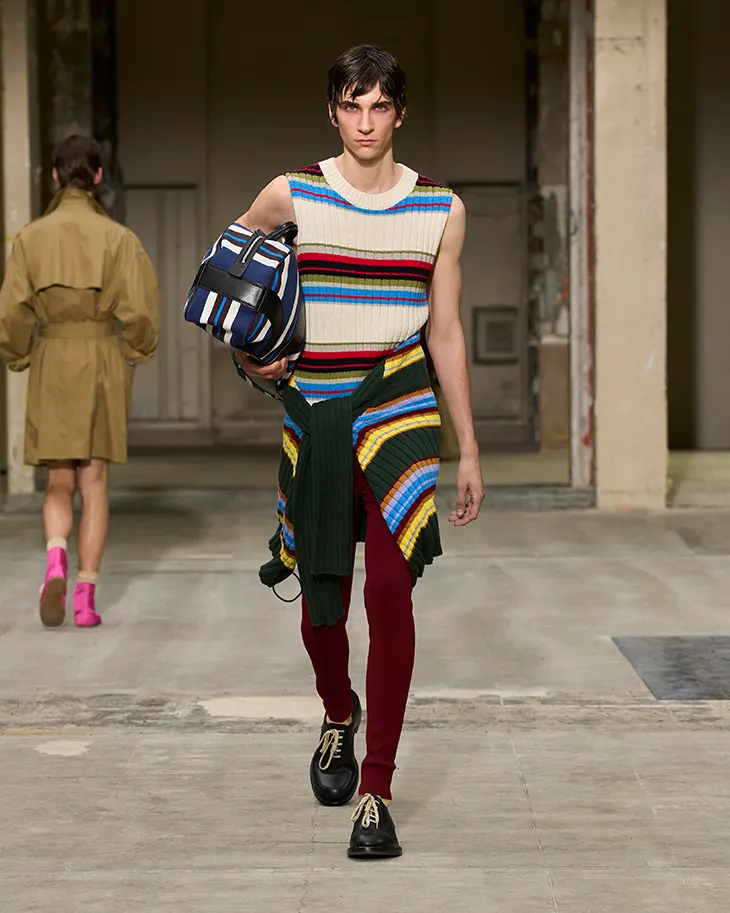
The cummerbund, usually locked into formalwear, becomes a key detail. Klausner folds it into various looks, using it to draw the waistline or punctuate a tonal set. It appears ribbed, striped, embroidered, and fully recontextualized.
Footwear shifts between dress and ease. Classic shoes arrive in black or reddish leather, some with croc stamping, all with athletic laces. The DVN sneaker returns in new materials and shades: red suede, pastel satin, monochrome versions that slip easily under cropped trousers. Socks tone to match: dark with dark, pale with pale.
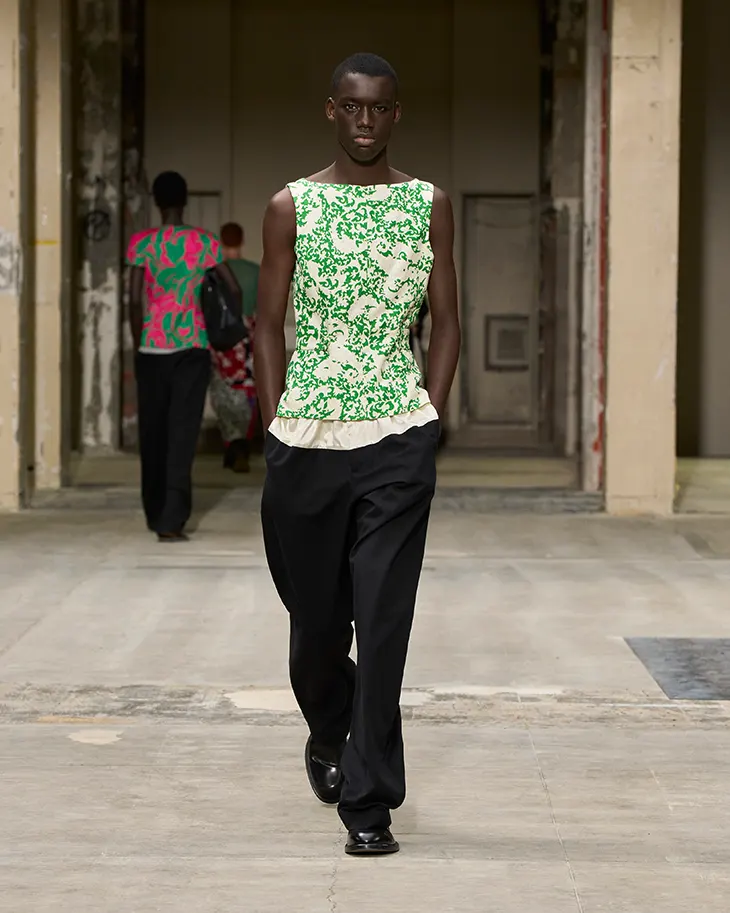
Accessories take cues from beach debris and worn-in objects. Shells, abalone, and rings hang from cords and gold wire. Jewellery pieces feel personal, as if pulled from a pocket after a weekend away. Bags follow that logic. The compact Arch contrasts with a longer duffel modeled on the DVN sneaker, soft and carried without structure.
Lou Reed scores the collection. His voice threads through the show, reminding the viewer that this isn’t a perfect day in the polished sense, it’s perfect because it refuses to settle. Klausner designs that way, too. He avoids clean conclusions. He dresses for the moment after the last drink, the walk home barefoot, the glance at the clock just before sleep.
